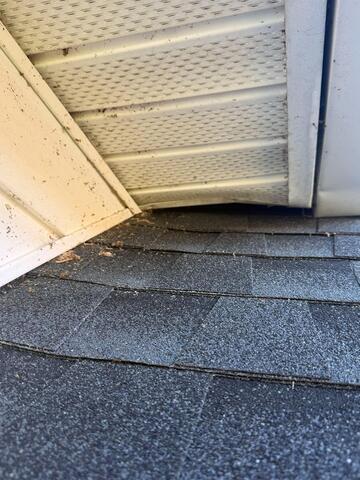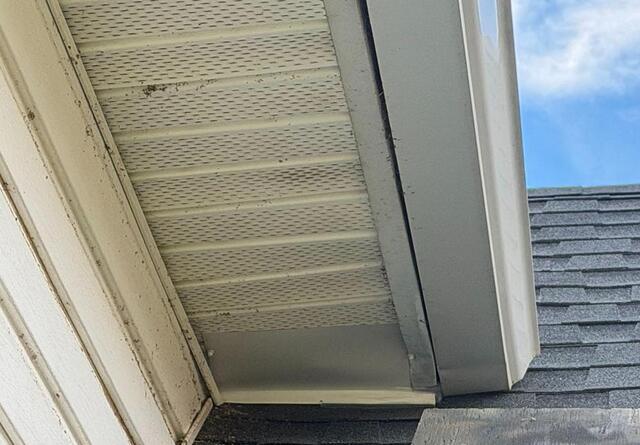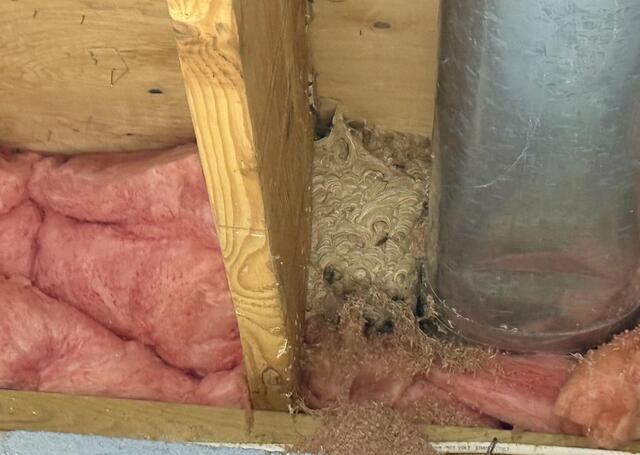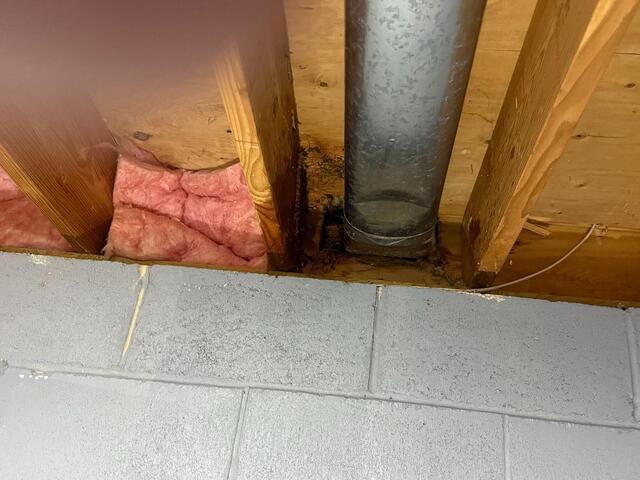Before & After Photos
Click on a photo to enlarge.
Installing a New Chimney Cap in Bernardsville, NJ
After we successfully & safely removed all the squirrels from this home in Bernardsvile, NJ, we're going to exclude them from the area that they were using to enter the home - the chimney. How are we going to do that? By installing a chimney cap over the chimney crown! This heavy-duty material is constructed out of 24 Gauge Top and Flange, and 18 Gauge Stainless steel!
Now the area is properly secured from not just squirrels, but all nuisance wildlife and nuisance birds too!
Taking Down a Huge Bald-Faced Hornets Nest in Bernardsville, NJ
Recently, we were sent out on a service call for a new customer in Bernardsville, NJ to treat and remove a hornets nest. The owner stated that the nest was "big" and it was attached to her downspout. Well, when we arrived and spotted the nest, we determined that the term "big" was an understatement! The nest was MASSIVE and full of angry bald-faced hornets!
Bald-faced hornets are one of the most aggressive and territorial stinging insects out there. If anything comes within close proximity to their nest, they will attack it! So we equipped our protective bee suit and treated the nest with a knockdown liquid and a knockdown dusting application. Both of these treatments will rapidly exterminate the bald-faced hornets.
A short while later we removed the nest, disposed of it, and then treated the area with a liquid residual. This application will neutralize any bald-faced hornets that return to the area as well as prevent them, and any other stinging insect, from building another nest.
Closing Up the Access Points for Flying Squirrels in Bernardsville, NJ
Recently, we were sent out to a home in Bernardsville, NJ to remove some flying squirrels that had infested the attic. The flying squirrels had entered the home via the soffit return. They torn a hole right into the soffit! A short while after setting up our retrieval devices, we had successfully and safely retrieved all of the flying squirrels.
We then disinfected the attic and installed sturdy metal flashing over the entry point. This will prevent any future intrusions from flying squirrels, or any other nuisance wildlife. When we were finished, we then took all the flying squirrels to a safer location.
No More Groundhogs Burrowing Underneath the Deck in Princeton Junction, NJ
There were plenty of open areas around this customer's shed in Princeton Junction, NJ that the groundhogs used to harbor underneath the area! The entire shed was elevated and completely open! After we had safely retrieved all of the groundhogs and took them to a new humane location, we began excluding the shed.
First, we installed a new wooden trim for the upper sections of the shed. After that, we installed a new and sturdy lattice around the entire perimeter of the shed to properly close off all the open areas. Lastly, we installed Dig Defense® around every single new piece of lattice we installed. Dig Defense® is a below-ground fence system that is 15 inches deep, 4 feet across, and protects structures against all wildlife!
Yellow Jackets Hiding in the Insulation in West Windsor, NJ
As this homeowner in West Windsor, NJ was removing a few items out of his basement, he was attacked by several yellow jackets! He quickly ran upstairs and called Cowleys. After equipping our protective bee suit, we began inspecting the basement. A few minutes into our investigation, we discovered the yellow jackets nest. It was hidden behind a piece of insulation!
For treatment, we injected a knockdown dusting product, waited several moments, and then injected a knockdown aerosol application directly into the nest. These treatments will neutralize the yellow jackets quickly. A short while after applying the products, we removed the nest, and the piece of insulation that was stuck to it, and disposed of them properly.













